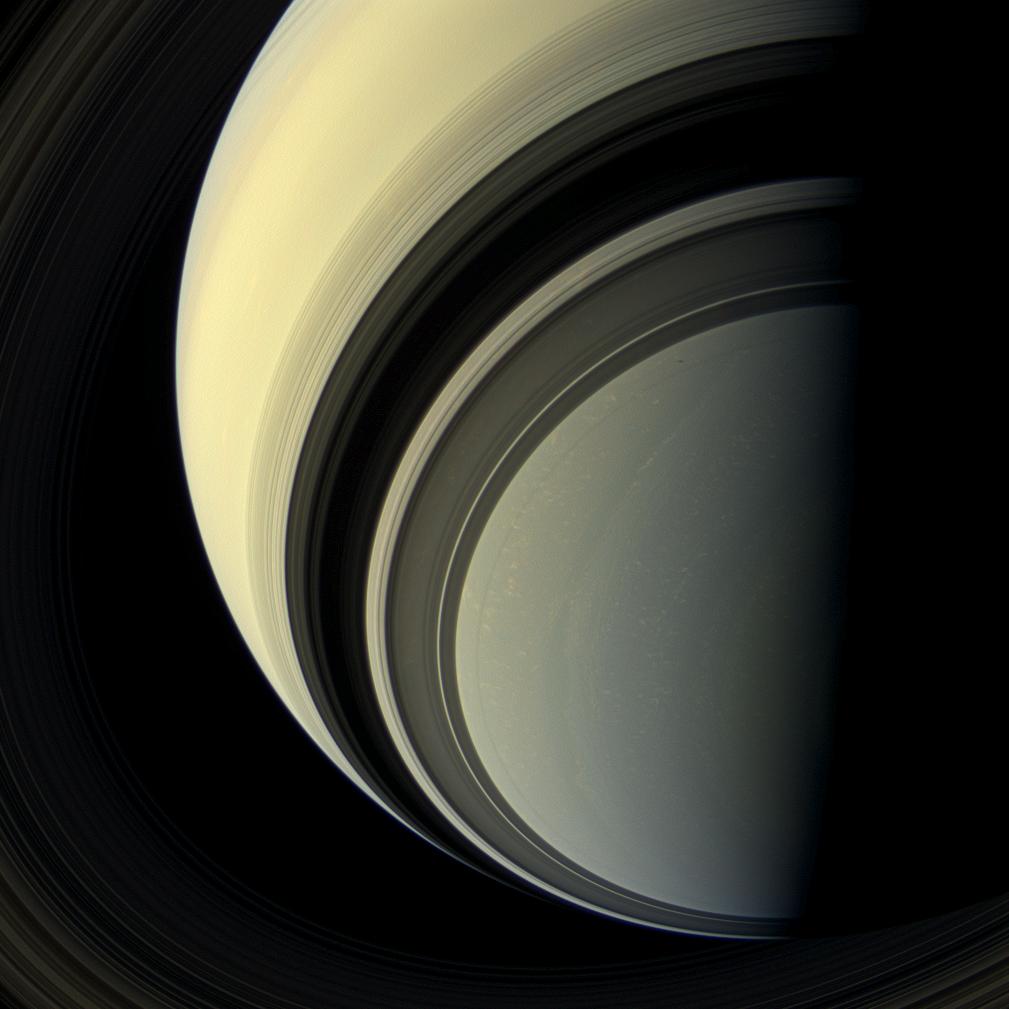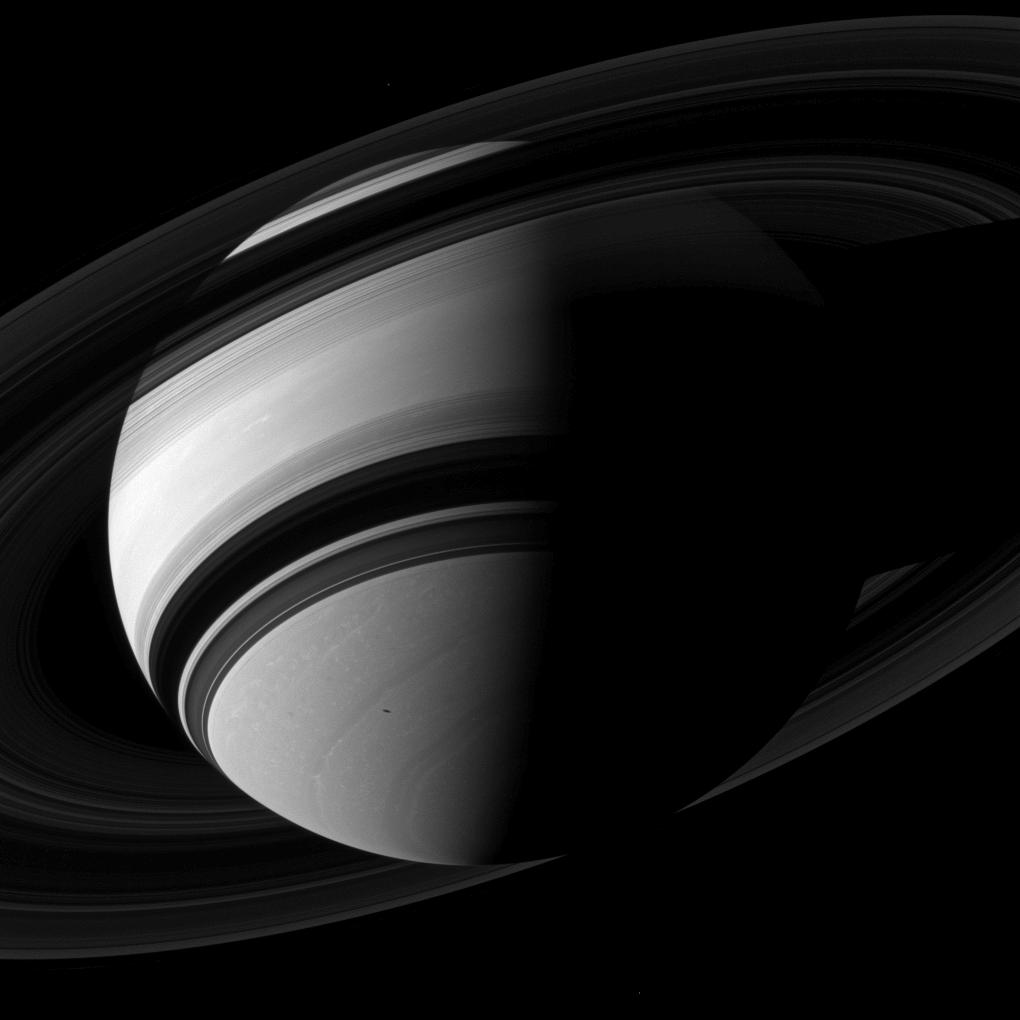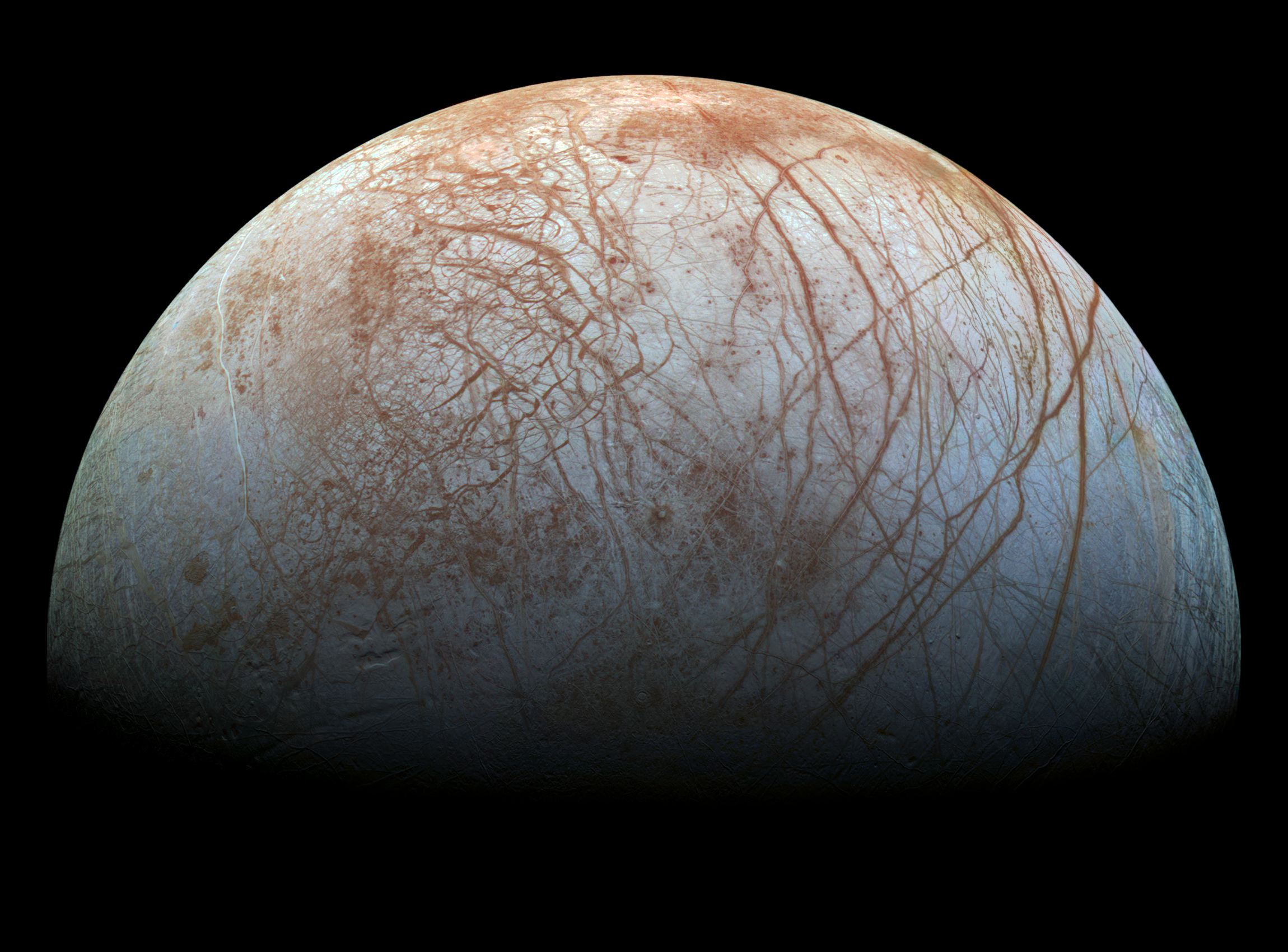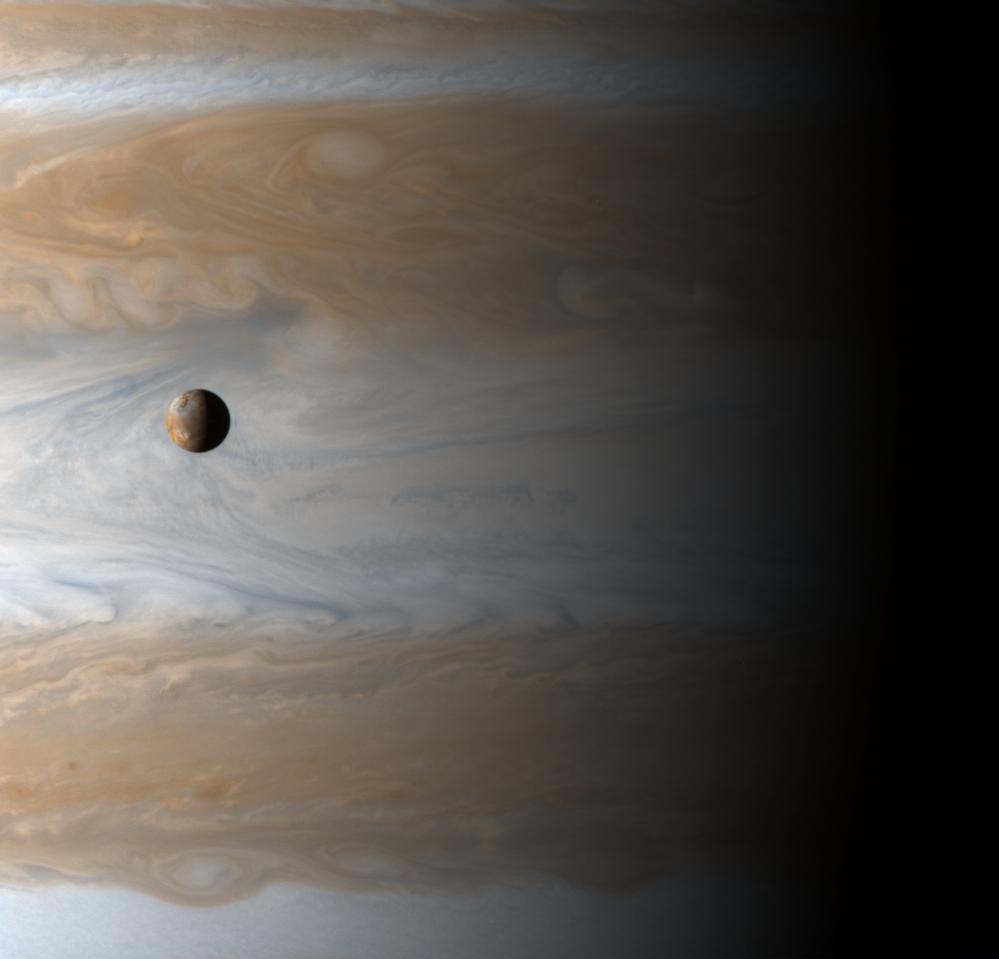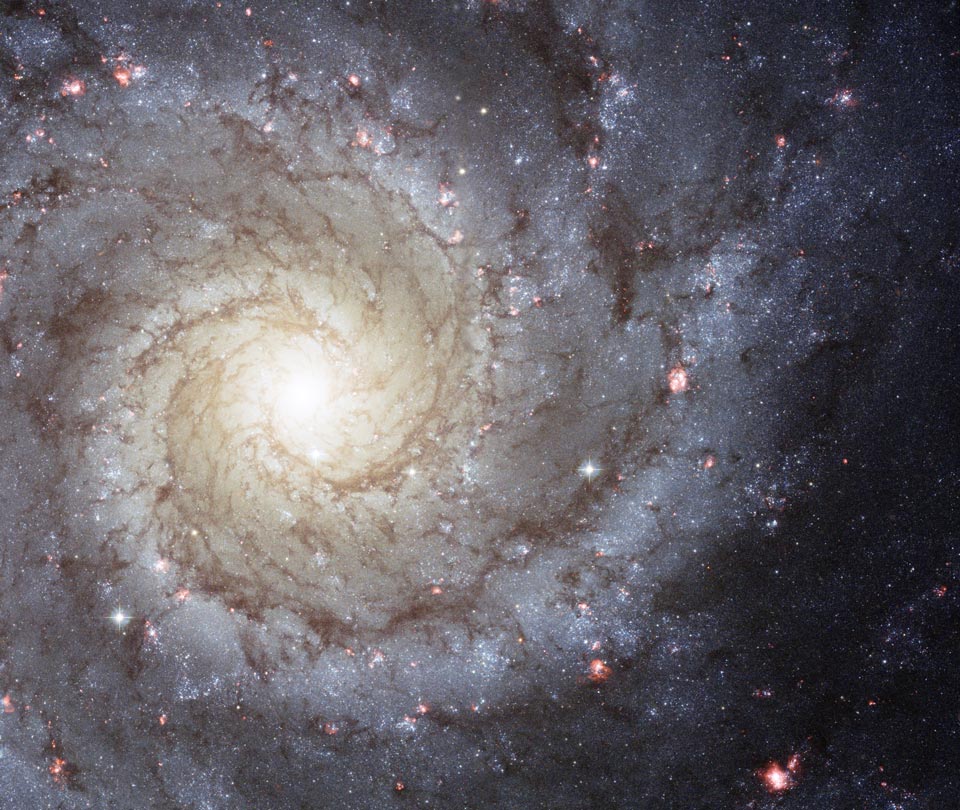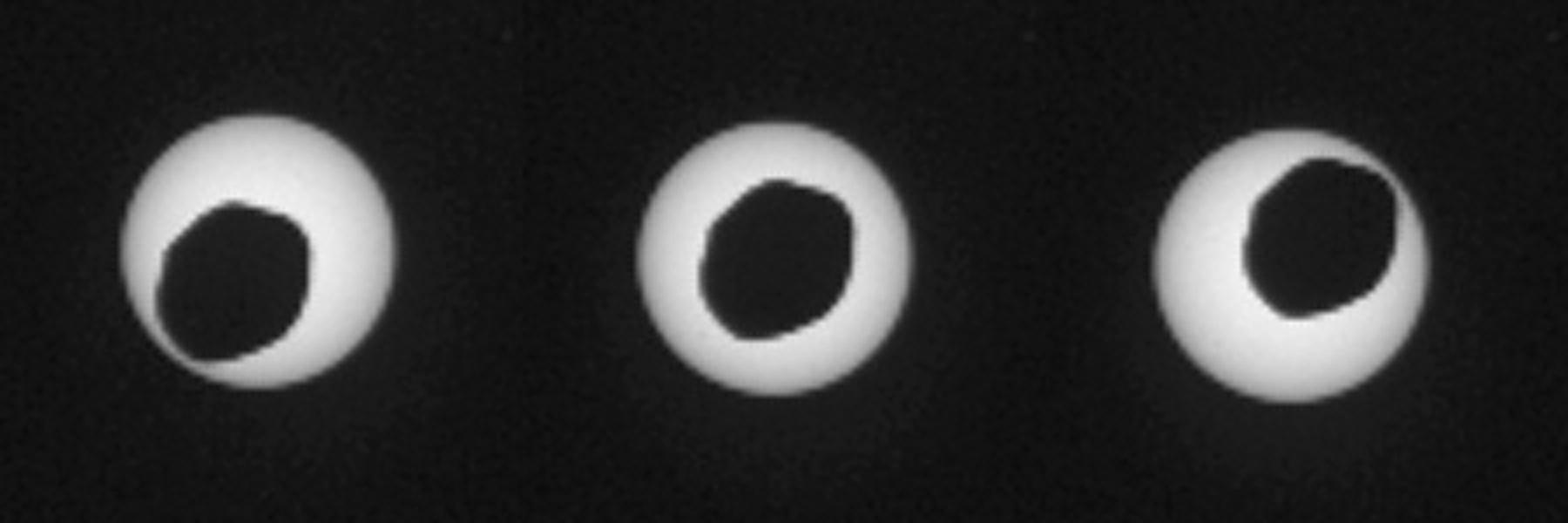 Astrônomos encontram planeta com anéis maiores que Saturno
Astrônomos encontram planeta com anéis maiores que Saturno
Após analisar dados colhidos por observatório que lê eclipses em outros sistemas, cientistas acreditam ter descoberto gigante gasoso com sistema de anéis.
Paul Rincon
Editor de Ciência da BBC News
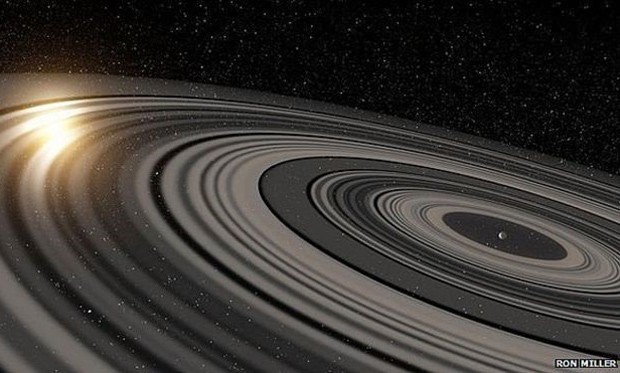 Representação artística do que pode ser a aparência do sistema de anéis descoberto (Foto: Ron Miller/BBC)
Representação artística do que pode ser a aparência do sistema de anéis descoberto (Foto: Ron Miller/BBC)
Astrônomos holandeses e americanos afirmam ter descoberto um planeta com um sistema de anéis gigantesco, 200 vezes maior do que os anéis de Saturno.
Segundo os pesquisadores, esta é a primeira estrutura deste tipo detectada em volta de um planeta fora do Sistema Solar.
Os cientistas afirmam que o sistema provavelmente tem mais de 30 anéis, cada um medindo dezenas de milhões de quilômetros de diâmetro.
Espaços detectados no sistema de anéis também sugerem que parte do material em volta do planeta pode estar se unindo para formar luas - um fenômeno que pode ser observado nos anéis de Saturno.
"Você pode pensar nisto (neste sistema) como um tipo de super-Saturno", disse o professor Eric Mamajek, da Universidade de Rochester, nos Estados Unidos.
Exoplanetas
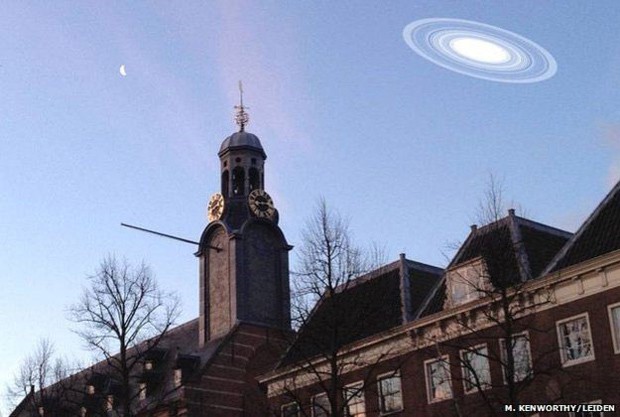 Esta imagem mostra como o sistema seria visível na Terra caso estivesse no lugar de Saturno (Foto: N. Kenworthy/Leiden/BBC)
Esta imagem mostra como o sistema seria visível na Terra caso estivesse no lugar de Saturno (Foto: N. Kenworthy/Leiden/BBC)
Os anéis foram encontrados graças a dados levantados pelo observatório SuperWASP, que pode detectar exoplanetas quando estes cruzam em frente às estrelas em volta das quais orbitam - provocando um enfraquecimento da luz emanada por estas.
Neste caso, os astrônomos observaram uma série complexa de eclipses profundos que durou 56 dias. Eles acreditam que este fenômeno foi causado por um planeta com um sistema de anéis gigante que bloqueou a luz enquanto passava em frente da estrela J1407.
"A curvatura da luz, de ponta a ponta, levou cerca de dois meses, mas podíamos ver mudanças rápidas no espaço de uma noite", disse à BBC o líder da pesquisa Matthew Kenworthy, da Universidade de Leiden, na Holanda.
"Durante o período entre meia e uma hora, a (luz da) estrela podia diminuir entre 30 ou 40%", acrescentou.
Se os anéis de Saturno fossem do mesmo tamanho dos observados neste planeta, eles seriam visíveis da Terra durante a noite e muito maiores do que a Lua cheia.
No ano passado os astrônomos tentaram encontrar o planeta, olhar diretamente para o corpo celeste e não apenas para os eclipses, mas não conseguiram.
Mesmo assim, Kenworthy acredita que a única coisa que poderia manter estes anéis unidos "é um planeta".
A equipe de pesquisadores acredita que o planeta provavelmente é um gigante de gás, como Júpiter, mas entre dez e 40 vezes maior.
Amadores
O planeta distante, batizado de J1407b, também poderá dar pistas sobre o processo que levou à formação de luas em volta de gigantes gasosos em nosso Sistema Solar.
"A comunidade de ciência planetária cria teorias há décadas, (especulando) se Júpiter e Saturno teriam, em um estágio inicial, discos em volta deles que levaram à formação de satélites, disse Eric Mamajek.
Os astrônomos encontraram pelo menos uma falha na estrutura dos anéis.
"Uma explicação óbvia (para esta falha) é que um satélite se formou e abriu esta falha. A massa do satélite poderia ser algo entre a Terra e Marte", disse Kenworthy.
Os pesquisadores estão incentivando astronônomos amadores a co-monitorar o sistema da estrela J1407, para ajudar a detectar o próximo eclipse dos anéis.
As observações da J1407 podem ser relatadas à Associação Americana de Observadores de Variações de Estrelas (AAVSO, na sigla em inglês).
http://g1.globo.com/ciencia-e-saude/not ... turno.html